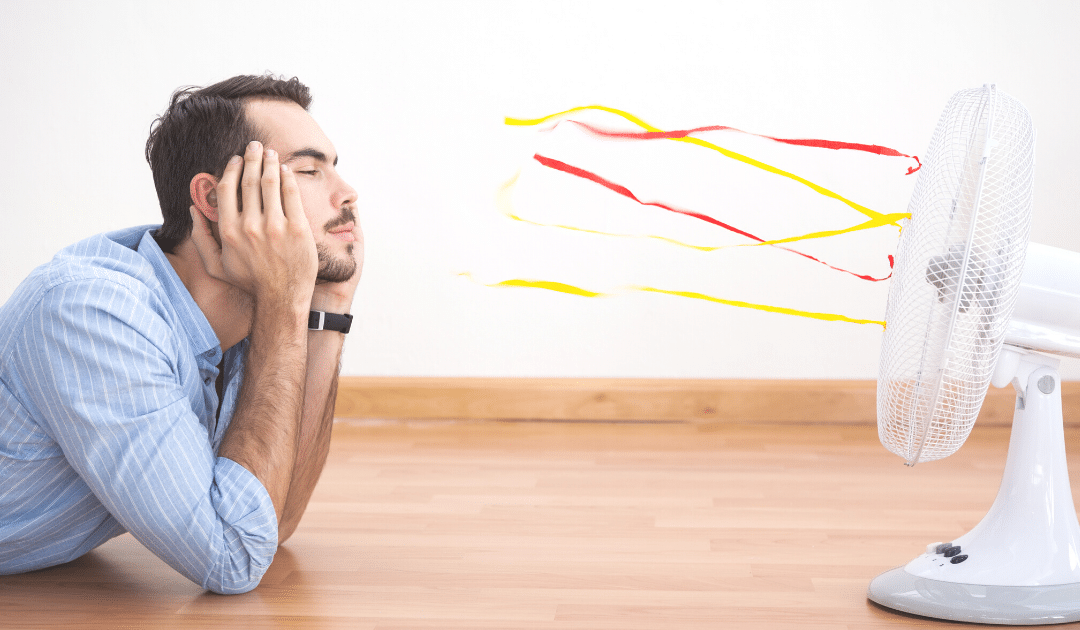
by California Casualty | Homeowners Insurance Info |
Summer is here and (unfortunately for most) so is the heat and humidity. But humidity in your home isn’t just uncomfortable. Did you know it can also do some serious damage to your house and your health?
Humidity describes the amount of moisture in the air. When the humidity is high, a hot day feels that much hotter. When there’s too much humidity inside your house or apartment, mold and mildew begin to take hold, rotting the wood and creating the ideal environment for dust mites and other allergens. If you’ve ever noticed a musty odor in your home, chances are you are smelling mold and mildew. And if you have asthma or allergies, this can make your symptoms that much worse.
What causes humidity?
Cooking, bathing, washing dishes, and line drying clothes inside can all add moisture to the air inside your home. Leaks in your pipes or cracks around your doors and windows can let in humid air, as can dampness from your home’s crawl space. Even houseplants can create humidity.
How can you tell if your home is too humid?
Look for condensation on windows or wet spots on ceilings or walls. You may notice mildew and mold. You also can measure humidity with a hygrometer, available inexpensively online. The ideal humidity indoors is between 30-50%.
Tips to reduce humidity
The good news is that you can take steps to decrease the humidity in your home—and improve your air quality while reducing your cooling costs. Here’s how.
Tip #1: Running your air conditioner will help with humidity.
-
- Set your air conditioner to “auto” rather than “on.” During the “on” setting, your air conditioner blows air over a wet coil which can create more humidity.
- Make sure your air conditioner is well maintained. Change the filters. Keep drip pans and drain lines clear and clean.
- If your air conditioner is too big for your home, it will have shorter cooling cycles. That won’t be enough to reduce your home’s humidity.
Tip #2: Buy a dehumidifier or consider these DIY alternatives.
-
- Since lower humidity feels cooler, a dehumidifier will allow you to reduce the use of your air conditioner, thus reducing your cooling costs.
- Though not as effective as a dehumidifier, you can try DIY versions:
- A basket or can of charcoal briquettes can absorb humidity in a room. Replace it every 2-3 months.
- Rock salt or kitty litter also absorbs moisture in the air. Take two similarly size buckets. Drill holes in the bottom of one. Stack the drilled bucket inside the other bucket – making sure to leave a gap. You may wish to put an object in between the buckets to create that space. Fill the top-drilled bucket with salt or kitty litter. Then, check it every few days. Water will collect in the bottom bucket. Empty as needed.
Tip #3: Fix leaks and gaps.
-
-
- Fix leaky faucets and pipes so there’s no excess water in your home.
- Put caulk and weatherstripping around doors and windows to keep cool air in and hot, humid air out.
Tip #4: Create airflow.
-
-
- Install vent fans in the kitchen and bathrooms. Keep them on a little longer after showering or cooking. Fans move air around and help with evaporation.
- Make sure there is ventilation in your attic. A lack of airflow can cause condensation, creating mold growth in your home’s structure.
- If you have a sealed, unused fireplace, that can cause condensation. Make sure there is airflow or it could affect your walls.
Tip #5: Limit humidity from under your home.
-
-
- Cover dirt floors in your crawl space with a vapor barrier. This piece of plastic will help contain the humidity below your house.
- Slope the soil away from your foundation so water doesn’t pool underneath your home.
- Keep gutters and downspouts clear so you don’t have standing water. Extend your downspouts so they flow away from your home.
Tip #6: Be conscious of daily living choices.
-
-
- Instead of hanging clothes inside to line dry, hang them outside (if allowed in your community).
- Lower the temperature of your showers by a few degrees, and take shorter showers. This will help reduce humidity.
- Crack the window open during a shower to help release the extra humidity.
Tip #7: Position your house plants to help with humidity.
-
-
- Some house plants produce moisture and others absorb it. A Boston fern will absorb humidity while a spider plant will make it more humid.
- Move your moisture-producing plants to one room with good airflow or outdoors if possible.
Follow these steps and you’ll soon be enjoying a cooler, more comfortable home.
This article is furnished by California Casualty, providing auto and home insurance to educators, law enforcement officers, firefighters, and nurses. Get a quote at 1.866.704.8614 or www.calcas.com.
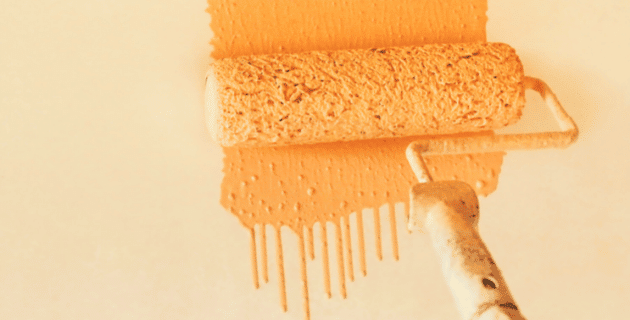
by California Casualty | Homeowners Insurance Info |
Looking for projects to do this summer to enhance your home? Try these 6 fun, easy and creative ways to spruce up your living space. We’ve even added some helpful tips so that you can get the most out of each DIY (do-it-yourself) project. Happy decorating!
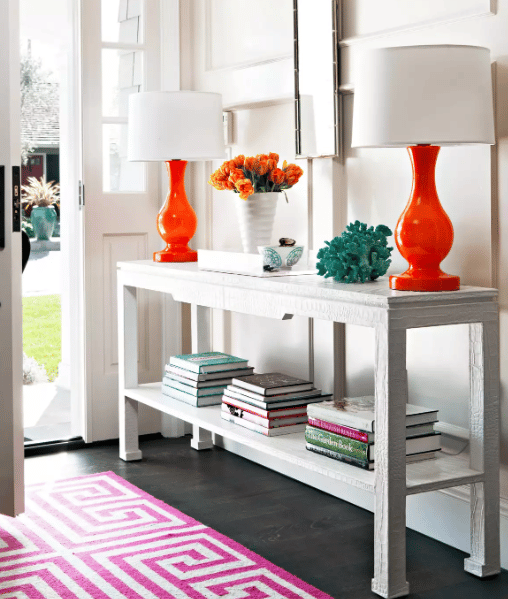
Project 1: Add Storage to Your Entryway
Get ready to transform your entryway into the perfect spot for storage. Not only will this give you a place to put your keys (and find them later), but it will offer a beautiful focal point for guests as they enter and exit your home. Choose a small table or bench that fits in the space. Look for one with a second shelf or drawer for additional storage. Decide on the perfect spot, out of the way of the front door and the closet door. Once it’s placed where you’d like it, hang a wall-mounted shelf or hooks above the table for easy storage of keys and other items.
Project Tips:
-
- Look on Facebook marketplace for cheap benches, tables, or cabinets that you can refinish.
- Make sure you leave enough room to still walk through your entryway.
- Don’t forget the décor! Add pillows and lamps for a fun pop of color.
- Use baskets to group items, such as stacks of incoming mail, in a decorative way.
- Store items here that you need as you enter or exit your home, such as keys or sunglasses, for added convenience.

Let’s face it. It’s fun to write on your walls, and with a chalkboard wall calendar, you can do exactly that! This type of calendar is so much fun that it encourages everyone to stay organized. Plus, it’s easy to create. All you need is some chalkboard paint, painter’s tape, and measuring tools. Sketch out your plan on a piece of paper. You can plan one large rectangle or a series of rectangles that come together as a whole: monthly or calendar, daily reminder lists, etc. Once the design is set, it’s time to measure and paint, and voila—you’ll have a masterpiece before you know it.
Project Tips:
-
- Start in the middle and work outward when you paint. Use a roller for large areas and a brush for small areas. Make sure to use two coats of paint.
- It takes three days for the paint to fully dry. You may be tempted to test it out, but don’t. You’ll be happy you waited.
- Personalize your calendar by adding your family’s name at the top. You can use beautiful stencils to create the perfect lettering.
- Add “to do” lists for each family member at the bottom of the wall calendar, within easy reach.
- Color code your activities by person with different color chalk.
- Your chalkboard wall doesn’t have to be black. Chalkboard paint comes in many colors!
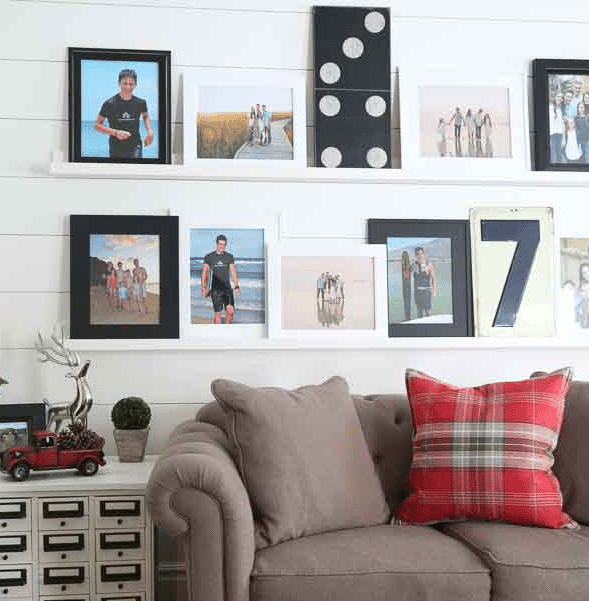
Who said you had to hang your pictures on the wall? A picture ledge is a great alternative. Picture ledges are a cross between bookshelves and fireplace mantles. They’re decorative and they give the room a little extra depth and interest. Picture ledges are great ways to display family photos and smaller artwork pieces. Choose a wall for your picture ledge, such as your living room or den. Then follow these steps to make your own picture ledge. It’s not hard to make your own but you also can buy premade picture ledges or use a fireplace mantle or decorative crown molding.
Project Tips:
-
- You can find beautiful premade pieces that could be used as picture ledges on Etsy
- For a more finished look, choose pictures with frames and mattes that have a similar color scheme.
- If you have furniture beneath the picture ledge, you can use it as a guide for how long the ledge should be.
- For an instant room makeover, change the pictures that you’re displaying!

If you’re looking to add some red, white, and blue to your summer celebration, this patriotic wreath is easy and fun to create. It looks great displayed indoors or out. You can get a wire wreath frame at any craft supply or fabric store and the clothespins at a grocery or discount store. Then it’s just a matter of painting and assembling for a beautiful, artistic result!
Project Tips:
-
- Paint the clothespins and the stars on top of a craft mat so you don’t get paint all over your table.
- For a shortcut, squirt some paint into a gallon plastic bag, add your clothespins and shake them up. Then touch up any missed spots.
- Change the colors of the clothespins to shades of blue and add some shells or starfish for a fun beach theme.
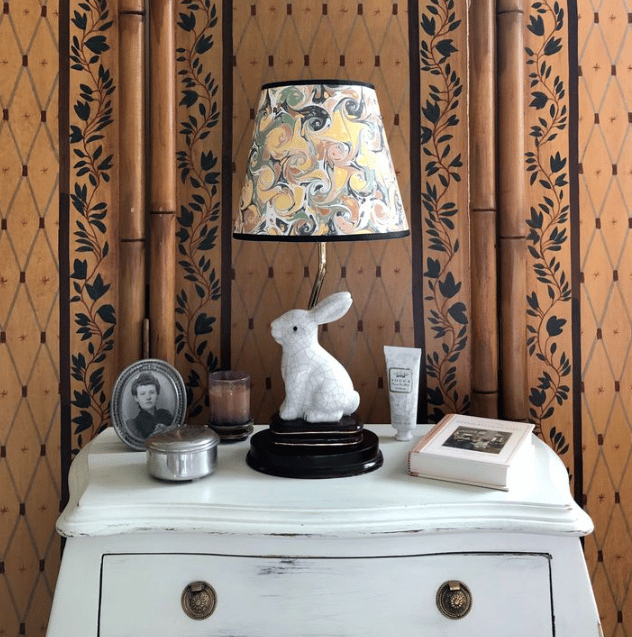
Light up your room with elegant lamp shades that you made yourself! It’s as simple as cutting and pasting to transform a ho-hum beige shade into a stunning showpiece. Choose the decorative paper that you like. Create a pattern by rolling the lamp shade along kraft paper as you trace the outline. Cut out the pattern and check that it fits around the shade. Then cut the fancy paper into the pattern shape. Glue it to lamp shade and add decorative trim for a finished look.
Project Tips:
-
- Hold the patterned paper up to a light. This will give you an idea of how your pattern will look on a lamp.
- Use clothespins to hold the trim in place as it dries.
- If you use spray adhesive for the paper, make sure to spray both the lamp shade and the paper. Then, work quickly as it dries fast.

With so many people working from home, it’s nice to have your own space. You can transform a closet into an office or homework space with just a few adjustments. Take off the door and remove the clothing rods. Add a large shelf at desk height and two narrower shelves above it for storage. Then add the supplies that you need when you work such as a desk lamp, pens, pencils, etc.
Project Tips:
-
- Add a pop of color to your desk décor with a vase or planter.
- Add a corkboard to the back wall to post notes or display photos.
- Keep the closet door in the attic or garage in case you’d like to replace it someday. Or you can choose to keep the door on and close it when not in use.
This article is furnished by California Casualty, providing auto and home insurance to educators, law enforcement officers, firefighters, and nurses. Get a quote at 1.866.704.8614 or www.calcas.com.

by California Casualty | Auto Insurance Info, Homeowners Insurance Info |
You know the basic coverage that comes with your health insurance, car insurance, and home insurance policies. But did you know there are other special insurance policies and add-ons that you could be missing out on?
If you’re traveling to Mexico, own an older home, a classic car, or have precious family heirlooms, etc., you should increase your protection by looking into purchasing these lesser-known insurance policies and options.
Planning to travel south of the border? Mexico does not recognize U.S. auto insurance. If you’re driving to Mexico from the U.S. in your own car or a rental, you will need to purchase a tourist auto policy.
-
- A Mexico auto policy will allow you to cover damages if you’re involved in an accident.
- If you cannot show proof of Mexican insurance, you can be heavily fined and even arrested. This is true even if you are not at fault for the accident.
- You can get coverage for the duration of your trip: a few days, a few months or longer.
2. Homes Built Before 1986
Homebuilding has changed over the years. If you’re living in a home built before 1986, it’s likely your house has outdated materials or old-fashioned types of construction. You can get a policy option that helps bring your house up to date if it is damaged.
-
- With this type of policy, in the event of a loss, your insurance covers repairs and/or replacement of outdated materials and construction methods.
- As a result, losses will cost less to settle.
- Those repairs and updates will reduce the coverage amount that you need to protect your home.
- This will ensure you have enough insurance to rebuild.
3. Special Computer Coverage
With everyone working remotely this past year, computers have become our lifeline. Consider a special computer coverage option to ensure you are covered for all of your devices: desktop computers, laptops, tablets, and smartphones. While homeowner policies typically cover possessions, special computer coverage offers more coverage.
-
- If you accidentally spill a glass of water on your computer, and your computer is damaged as a result, it would be covered.
- With this coverage, you will receive more money for your devices if they are damaged than with traditional homeowner’s.
Personal Property, also referred to as “contents coverage,” is the term insurance companies use to collectively define the things you own inside your home. Scheduled Personal Property (SPP) Coverage is for items that have higher values above your personal property coverage limits. This includes:
-
- Heirlooms
- Watches
- Jewelry
- Instruments
- Furs
SPP offers much broader coverage for your precious items – if you misplace a set of earrings, they are covered; if a diamond falls out of a ring, or a guitar neck breaks, they’re covered. There is no deductible if the covered items are stolen, lost, or damaged. SPP provides a replacement for the actual appraised value of the item.
Spending time and money on your classic car? Don’t let it go to waste. Make sure it’s protected with classic car insurance coverage. With this coverage, you will pay less than standard auto insurance coverage and you can determine the value, the deductible, and the policy options that work best for you including towing and coverage for lost or stolen parts. There are mileage plans that cover everything from cruising on the weekends to driving to attend auto shows.
-
- Classic Car Coverage is for all types of collectibles – collector trucks, classic and custom motorcycles, kit cars, fire engines, military vehicles, and more.
6. Refrigerated Property Coverage
When there is a power outage, the food in your refrigerator could spoil. A standard homeowner’s policy may cover the costs of replacing some of the food. A refrigerated property policy provides additional coverage.
- A refrigerated property policy adds up to $500 of coverage for property, such as meat that spoils because of a power outage or equipment failure.
7. Other Members of Your Household Coverage
Do you have someone living with you who is not a relative, guest, or tenant? You may consider this policy for other members of your household.
-
- If a boyfriend moves in, and he’s not on the lease, it may make sense to add this coverage.
- This policy adds personal property, liability, and additional living expense coverage for that person.
Our pets are like family and we want to keep them as healthy as possible. Pet insurance can help to offset those veterinary expenses.
-
- Depending on your policy, pet insurance may cover exams, prescriptions, lab tests and x-rays, surgeries, emergency visits, and even cancer.
- You make the initial payment and then are reimbursed depending upon the deductible and limits that you have selected.
9. Sump Pump Endorsement
If your home is prone to flooding, chances are that you have a sump pump to remove the water. A sump pump/water backup endorsement covers damage if your sump pump fails or something happened to cause water to back up into your home. This damage is not covered under standard homeowner policies.
-
- Just a couple of inches of water backup can cause thousands of dollars in damage – ruining carpets, destroying appliances, and crumbling drywall.
- This could happen to any system, and especially ones where sewer pipes are old.
10. Permitted Incidental Occupancies – Residence Premises (for Home-Based Businesses)
Do you have a home-based business? You may wish to add an endorsement to your homeowner’s policy.
-
- This policy covers limited activity for business that takes place in your home or in a detached garage or other building on your property.
- It protects entrepreneurs, such as teachers offering in-home tutoring or music lessons.
Ninety percent of Americans live in areas that are seismically active. If you live in an area that is prone to earthquakes, you may want to consider this additional coverage.
-
- Homeowner, condo, and rental insurance policies typically do not cover earthquakes.
- Earthquake insurance can help pay for some of your losses.
Floods are expensive. Just a couple of inches of water could cost thousands of dollars in damage to your home and belongings. There are a lot of myths about flood insurance; it’s important to know the facts.
-
- Flooding is America’s most common natural disaster.
- One in four homeowners will experience a flood during a 30-year mortgage.
- A flood insurance policy can protect your home and its contents.
This article is furnished by California Casualty, providing auto and home insurance to educators, law enforcement officers, firefighters, and nurses. Get a quote at 1.866.704.8614 or www.calcas.com.
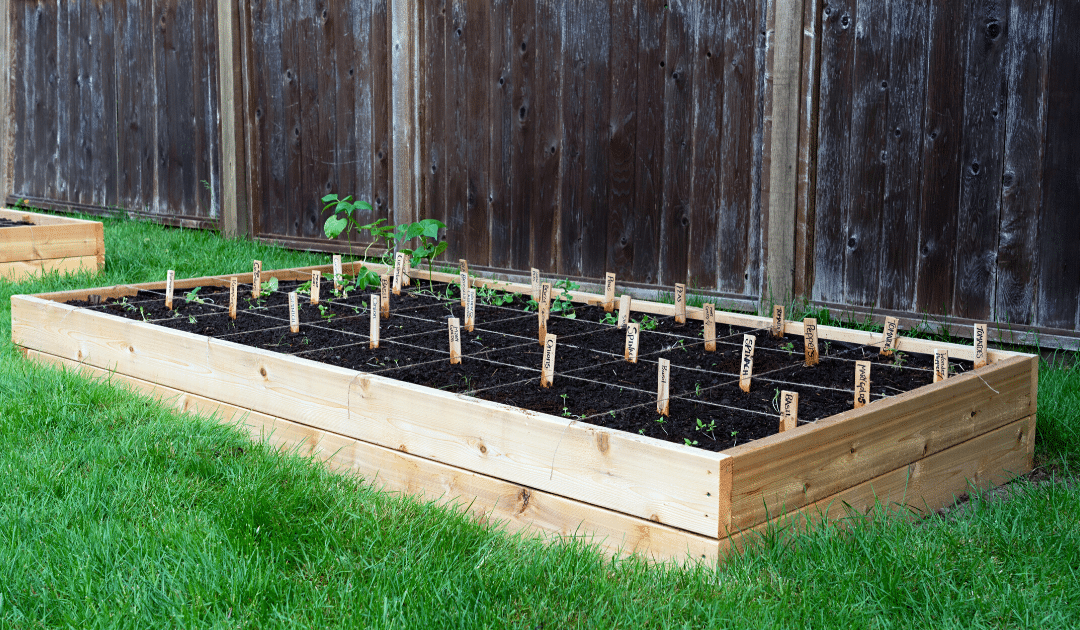
by California Casualty | Homeowners Insurance Info |
Summer is a great time to tackle outdoor projects. We’ve highlighted 5 of our favorites—fun and easy DIY ideas that will transform your yard and your summer.

The hammock is a classic addition to any yard. Plus, a project that gives us a reason to nap afterward is okay by us! This hammock stand is light enough to move around the yard. You’ll need to purchase the actual hammock but if you prefer, you could make your own hammock, too. The project requires some knowledge of power tools and saws; if you aren’t used to them, ask for help from an experienced DIYer.
-
- You can get some big box stores or lumber yards to cut the wood planks for you.
- If you don’t have weatherproof wood stain or paint, use regular versions. Just add two coats of varnish.
- Put your hammock in a shady corner, and preferably one with a view.
- Make sure to supervise kids in a hammock. Hammocks can be an attractive nuisance where children can get stuck or injured.

A garden path is a beautiful addition to your home and can add curb appeal. While you could create expensive versions with stone or pavers, we’ve chosen an easy and lower cost version that uses gravel as its base. Gravel has several advantages. It works in many different climates. It allows rain to soak through to the ground. It’s also easy to reverse if you decide later to do something else.
-
- Gravel comes in different colors. Choose one that complements the color scheme of your house or garden.
- Include a decorative edge to set off your gravel path.
- Add flowers along the edges for a pop of color.
- Add interest with flat stepping stones in the center of the path.
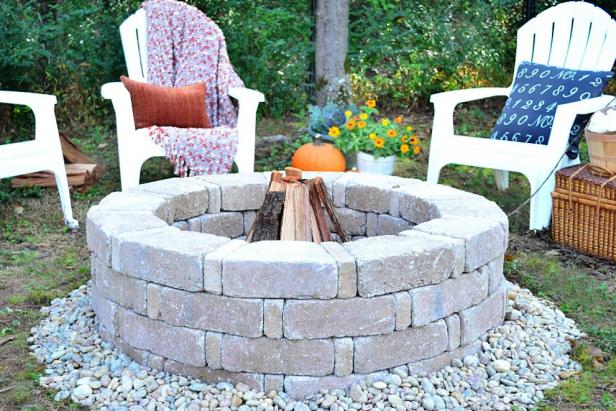
Gathering around the fire pit is the perfect activity to cap off a summer night. The supplies aren’t necessarily expensive, but they can be heavy so ask for extra help if needed. Make sure the fire pit is a safe distance from the house and away from high grass, bushes, and low-hanging trees. Clear and level the ground. Then build the pit using large and small bricks in a circular shape. Fill it in and edge it with small rocks. Then create a seating area, and let the fun begin.
-
- Check your local building codes and requirements so you know what is allowed.
- Avoid burning treated wood, wet wood, or anything that gives off a gas or dense smoke.
- Don’t use flammable fluids to start or relight a fire.
- Check the weather. If windy conditions are forecast, it could be dangerous to light a fire. Embers could easily blow towards your home creating a house fire.
- Supervise children closely around a fire pit. Do not leave them unattended for any reason.
- Safely dispose of ashes when you’re done for the night.
- Keep a fire extinguisher nearby.
- Your homeowner’s insurance may require extra coverage. Talk to your agent.
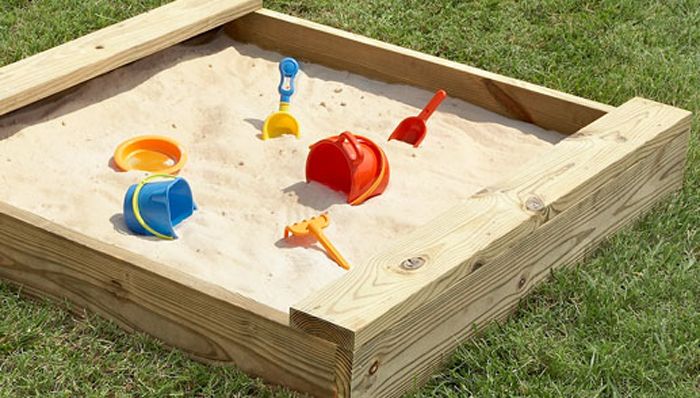
When you can’t take your kids to the beach, a sandbox is the next best thing. This DIY project is easy to construct and can offer hours of fun. With this sandbox plan, you construct the sides and use the earth for the bottom. Choose the right spot, clear the area and dig down a little bit further into the soil to help keep the walls in place. Then cover it with landscape fabric, assemble the sandbox and fill it with play sand.
-
- Add seats by adding 4 triangles to the corners of the sandbox.
- Add space for a beach umbrella by drilling a hole for a short piece of PVC pipe.
- Make sure you put the sandbox in a place where you can easily see the children.
- Cover the sandbox when not in use. Plywood works well. So does a plastic tarp.

You can turn your storage shed into a fun, livable space, such as a music studio, children’s playhouse, or craft room. You’re only limited by your imagination. Start with a new coat of paint. Caulk any cracks, add insulation and drywall. Hire a subcontractor if you’d like to install electricity, lighting, air conditioning, or heat. Add some furnishings, décor and enjoy!
-
- Check with your town to determine if you need a permit for the renovation.
- If electrical or plumbing work is needed, chances are you will need to get a permit.
- Consider painting your shed in the same colors as your home for a “mini” version.
- Find inexpensive décor and furnishings on Facebook marketplace.
- Make sure you can lock your shed to protect your new living space.
If your project increases the value of your home or adds liability, you may need to adjust your insurance. Check with your agent or get a free policy review to find out more.
This article is furnished by California Casualty, providing auto and home insurance to educators, law enforcement officers, firefighters, and nurses. Get a quote at 1.866.704.8614 or www.calcas.com.

by California Casualty | Homeowners Insurance Info |
It’s time to make a move. Perhaps you landed that new job and you’re looking to live closer to work. Maybe you’re finally getting that extra square footage—and the backyard—you’ve always wanted. Or maybe you’re downsizing to a smaller rental. Moving is a fact of life. According to the U.S. census, Americans will move approximately 11.7 times during their lifetime.
But the big question is, will you do it yourself? Or will you hire movers? Here’s some guidance so that you can decide.
Moving Comparison At-a-Glance
| Do-It-Yourself |
Hybrid |
Moving Companies |
| Most affordable |
Affordable |
Most expensive |
| Time-consuming |
Time-consuming |
Least time needed |
| Need help from family, friends |
Don’t necessarily need help |
No help needed |
| Risk of injury, risk of lost or damaged goods |
Risk of injury, risk of lost or damaged goods |
Risk of lost or damaged goods |
Do-It-Yourself Moves
You’re strong and capable. You handle a lot of tough tasks in your life. Why not a move? Do-it-yourself, or DIY, moves are popular because they’re generally less expensive and we all want to save money. If you’re thinking about a DIY move, consider what’s involved in this type of move:
-
- You will need time in your schedule. If you don’t have enough time, this type of move is not for you.
- You will have to do all the organization and packing.
- You will likely need help from friends and family on the actual move day if not before.
- You will likely need to rent and drive a moving van or truck. You will have to pay for fuel and tolls.
- Factor in the time you will need to take off of work when you are moving yourself.
Hybrid Options
You don’t have to choose between a DIY move or a moving company. There are options that feature the best of both.
-
- Consider paying for labor to help with loading and unloading. Many truck rental companies offer add-ons of labor help. That way, you can do a DIY move with help.
- You can rent a portable moving container. In this type of move, a company drops the container or pod at your property. You load it up, and the company moves it to the new location, where you unload it.
Moving Companies
If you don’t have the time, or if you have a large move to make, hiring a moving company makes sense. Professional movers don’t just do the heavy lifting. They make moving less stressful and more efficient. But their services come at a cost. There are several factors that go into a moving company’s cost estimate:
-
- The size and weight of your belongings
- The travel distance, mileage and fuel, and time
- Packing and moving supplies if the company is contracted to handle those
- The moving date (Generally, moves done mid-month and midweek offer the best discounts).
What To Consider
Get a written cost estimate from your prospective mover. (We recommend getting at least three cost estimates from three different providers.) Make sure that the mover you choose is licensed and insured. Read the agreement carefully, including the small type, to ensure that there will be no surprises. Beware of moving companies who provide estimates for your move without visiting your home and taking an inventory of your belongings. Watch for movers who ask for cash or a large deposit before the move. You should only pay on delivery.
Most renters and home insurance policies will not cover your belongings while they are being moved. The moving company will offer liability and valuation coverage. You may decide to purchase additional moving insurance from a third-party provider. If you’re considering an interstate move, learn your rights and responsibilities as outlined by the Federal Motor Carrier Safety Administration.
Do you need to tip your movers?
Yes, it’s standard practice to tip each person who is moving you. Consumer Affairs recommends tipping 15% to 20% for long-distance or large moves. You can tip less, 5% to 10% for shorter, closer moves. This amount is split among the moving crew, so if your move costs $2,000 and you’re just going across town, plan to tip about $200 total.
How to Cut Costs and Save Time on Your Move
-
- Hiring a mover? Ask if there are cheaper dates and times to move.
- Downsize before moving. Donate or sell items that you no longer need or want. That way, you’ll have less to move.
- Use the buckets, baskets, clean trash cans, and suitcases that you need to move anyway to store items that you want to move. Use blankets and towels, in the same way, to protect and cushion breakables.
Be safe when looking at ways to cut your moving costs. You will often find websites offering helpful tools for moving such as moving cost calculators that require you to enter your information to get the link. What they neglect to tell you is that they will be sharing your information with moving companies. You will start to get calls immediately from dozens of companies trying to sell you services. Think twice about entering your information online.
Don’t Forget!
Whether you’re moving from a rental or you own a home, there are apps that can help you to organize your move and take away some stress. Here are some popular ones:
-
- MoveAdvisor
- Moved
- Dolly
- Unpackt
And if you’re moving because of work, your moving expenses may be tax-deductible! Keep your receipts and use IRS form 3903 to document your move when you file your taxes.
Here’s to the start of a wonderful adventure in your new home. Have a safe and successful move.
This article is furnished by California Casualty, providing auto and home insurance to educators, law enforcement officers, firefighters, and nurses. Get a quote at 1.866.704.8614 or www.calcas.com.

by California Casualty | Good to Know, Homeowners Insurance Info |
An attractive nuisance is anything on your property that is attractive to children, but in turn, could also put them in danger.
Examples of common backyard attractive nuisances include:
-
- Pools
- Hot tubs
- Trampolines
- Swingsets
- Firepits
- Fountains
- Treehouses
- Playgrounds
While these nuisances all serve as great ways for children to get outdoors and enjoy the summer sun, without the proper precautions, they can become problematic. In fact, attractive nuisances cause so many injuries when kids are out of school that summer is also known as “trauma season” among public health officials in the U.S. This is because unintentional deaths and serious injuries increase dramatically among children in the summertime.
Not only will these objects of entertainment put your own child at risk for serious or fatal injury, if one of their friends comes over to play one day and gets hurt on an attractive nuisance in your yard, you will be held liable for their injuries.
How to Minimize Your Risk
An attractive nuisance isn’t just limited to objects of entertainment like pools; they can also be anything that is on your property that draws curiosity like construction, weapons, grills, landscaping, lawn equipment, ponds, old cars, or appliances, etc.
This doesn’t mean that you will have to go and give all of your nuisances away, instead take the proper precautions to prevent the nuisances from causing harm.
Minimize the risk of an accident or injury by understanding what you have on your property that could be considered an attractive nuisance and take the necessary steps to safeguard against any future accidents.
-
- Keep your property clean. Pick up dangerous debris and clean up after projects that you have completed. If you have old items that you are using anymore, sell or get rid of them.
- Make dangerous items inaccessible. Keep dangerous weapons locked away in a safe, equipment, and vehicles in a garage or shed, and put a cover on pools, fire pits, grills, and hot tubs.
- Install a gate and lock system. If there is no way to make items in your yard inaccessible try installing a fence or locked gate with a no trespassing sign to help keep curious children out.
- Always supervise. If you have an attractive nuisance in your yard, never let your children or their friends play outside without adult supervision.
- Have adequate coverage. Make sure you have enough liability coverage with your homeowner’s insurance. Talk to your insurance agent and review your policy.
If you fail to minimize the risk of injury and a child in your neighborhood harms themselves (or worse) on your property, you may be subject to legal action. Read your local laws and use good judgment, if you feel like you have an item of concern in your backyard, use the steps above to help prevent an accident.
How an Attractive Nuisance Affects Your Insurance
Insurance agents look at your property to determine your home insurance rate. Certain features of your home or property could impact your rate because of their degree of danger. For instance, if you have an in-ground pool in your backyard you will likely have a higher rate because a pool increases the risk of danger.
When you speak to your home insurance agent you will need to disclose if you have any attractive nuisances on your property to protect you from getting future claims rejected, if an accident were to happen on your property.
Many people assume that their homeowner’s insurance will provide them the protection they need if someone gets injured at their home, but this isn’t always true. If you have an attractive nuisance, protect yourself and your family, talk to your insurance agent and ask about increasing your liability protection or about adding a personal umbrella policy to your homeowner’s insurance.
This article is furnished by California Casualty, providing auto and home insurance to educators, law enforcement officers, firefighters, and nurses. Get a quote at 1.866.704.8614 or www.calcas.com.

















